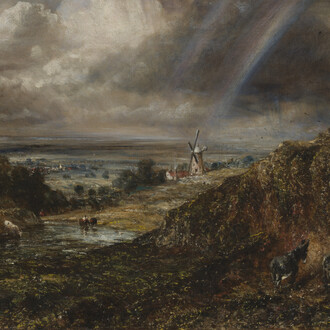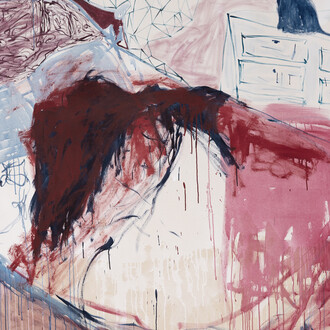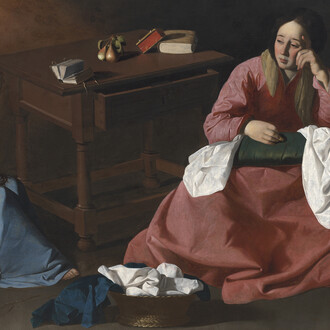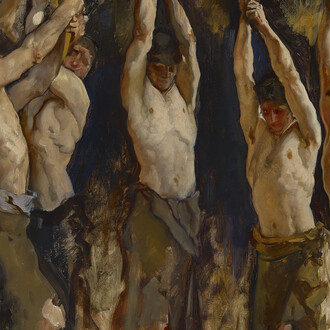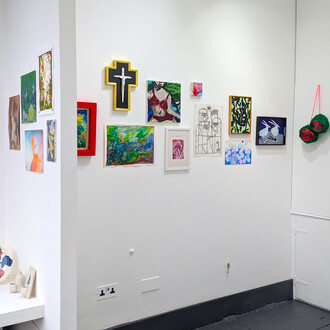The calm and the hectic exist simultaneously. This may seem like a dichotomous statement, yet it rings true in the paintings of Martin Aagaard Hansen (b. 1988, Odense, Denmark). Here, they settle with one another; not in their usual conflict, but in a balance of uneasy harmony.
In the work, we are offered multiple directions of movement: through darkened hallways, or outward via glowing windows towards abstracted cityscapes with orbiting light sources, while other options invite us simply to remain still. And so, the comfort of momentary stillness can be found amidst the work’s distant rumblings.
It is here that the watchful approach of Aagaard Hansen’s practice lies. In the moments where we both regard the path before us and sense ourselves regarding the visual thematics, we are confronted with the materiality - the teeth of the canvas fibres shining through layers of paint, slightly obstructing visibility.
The near-present, ghostly figures inhabiting the work are not uninviting; rather the opposite. They draw our eyes across the surfaces, asking us to embrace the soft disquiet that arises when one stands on the threshold of a decision: to become, briefly, a harbinger of both stillness and the movements of change.
In the work Doubters, we are introduced to two distinct figures painted after wooden figurines found on the windowsill in his grandmother’s home. The artist describes them as having become “an image of despair, doubt, and dealing with feelings of absurdity.” Their almost-glooming, statuesque nature is tempered by their stance, their open arms revealing powerlessness without shame. This whisper of Aagaard Hansen’s own experiences is not an isolated one, though he maintains that “what matters is that they remain open to interpretation within these nuances of human emotion, in all their ambiguity and mystery.”
The title of the show, Trumpets of the sky, refers to the reported aerial phenomenon of a “skyquake” - a mysterious, horn-like booming that seems to originate from the sky itself. It evokes scenes of everyday life becoming intertwined with the unseen blare of an apocalyptic orchestra, and that the works share this same audible atmosphere - a common denominator that wedges itself into the melancholic ambience of the works.
Within these movements to and from, between stillness and unrest, “a sense of hopefulness flickers through a veil of concern”. In the works presented in Trumpets of the sky, these contemplative moments become almost experiential. Traces of light guide us through scenes of dimly lit living rooms, industrial settings, and open plains, while quietly unfolding their narratives.
(Text by Isabella Pensa and Martin Aagaard Hansen)









